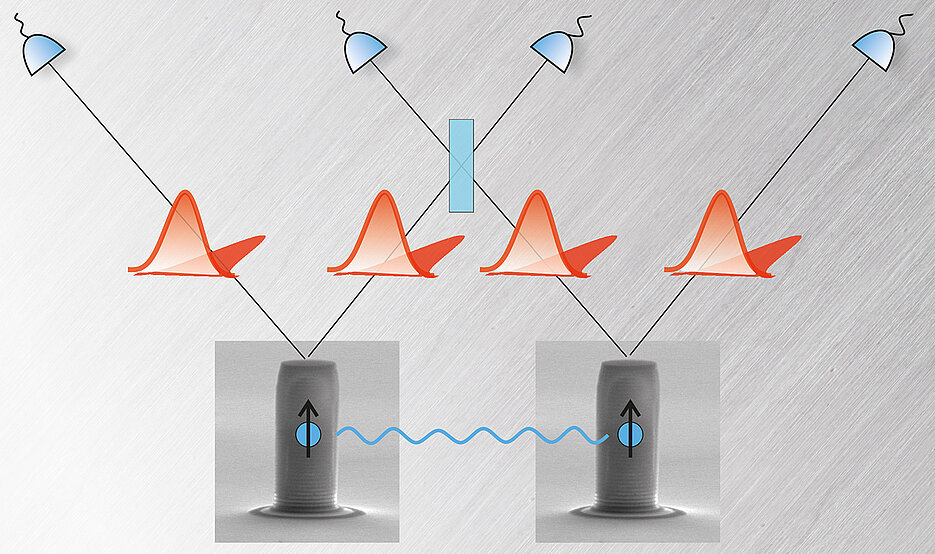A Leap Into Quantum Technology
10/26/2018Faster and secure data communication: This is the goal of a new joint project involving physicists from the University of Würzburg. The German Federal Ministry of Education and Research funds the project with 14.8 million euro.

In our digital world data security and secure communication are becoming more and more important. Quantum communication is a promising approach to achieve these objectives: quantum states are used to transport information, which eliminates unauthorized copying or reading due to fundamental physical laws.
To support the leap into quantum technology, the German Federal Ministry of Education and Research (BMBF) funds the new joint project titled "Quanten-Link-Erweiterung" (English: quantum link extension, short Q.Link.X) with 14.8 million euro over the next three years. "Our goal is to develop physically secure networks based on optical fiber", says Professor Dieter Meschede who works at the Institute of Applied Physics in Bonn, which makes the official statements on behalf of the joint project.
Quantum communication is still limited
However, this paradigm shift in data and message encryption – away from algorithmic processes to quantum technology – is limited: When transferring quantum information in fiber with light particles (photons), transmission losses occur inevitably. As a result, transmission links are presently limited to less than 100 kilometers.
"We intend to use quantum repeaters to overcome this barrier without compromising security," says Dieter Meschede. In telecommunication, a repeater is an electronic device that processes or amplifies a signal. It receives a signal, processes and retransmits it to extend the signal range and bridge a longer distance. The BMBF funded project aims to drive the development of such quantum repeaters.
Aim is a complete communication link
Three different platforms are used for this purpose: quantum dots, diamond color centers and a combination of atomic and ionic systems. They will be used to implement transmission links of initially up to ten or 100 kilometers and compare the advantages of the respective systems with each other.
"For the first time, Q.Link.X studies and develops not just individual components of a quantum repeater, but complete communication links," Meschede says. These activities are set to prepare a technology that might be suitable to cover longer distances of several hundred to thousand kilometers using optical fiber, at a later stage.
University of Würzburg: quantum dots in micropillars
Julius-Maximilians-Universität (JMU) Würzburg in Bavaria, Germany, receives more than 1.2 million euro funding from the joint project. On the Hubland Campus, Professor Sven Höfling and his team at the Chair for Applied Physics are working to build a quantum repeater segment based on semiconductor quantum dots in micropillars. The JMU team designs and builds the micropillars and inserts them into the communication link.
Quantum information from a photon is stored in the quantum dots of the micropillars, subsequently read and coded back into a photon. "The interference of two photons from two remote quantum dots allows generating an entangled quantum state that exists simultaneously in both remote quantum dots," says Dr. Tobias Huber, a JMU physicist. Subsequently, this state can be read out again at both quantum dots. In a network, it should be possible to extend this state sequentially from repeater to repeater, to cover any distance.
24 partners contribute to Q.Link.X
The involvement of industry partners and consultants from the beginning of the project facilitates the viability from an industrial an engineering point of view. The results are to be exploited in Germany through patents and spin-offs of the consortium. Q.Link.X has brought together 24 partners from university research institutes and industrial labs to study the key technology of quantum repeaters.
Contact
Dr. Tobias Huber, Chair for Applied Physics, University of Würzburg, T +49 931 31-84117, tobias.huber@physik.uni-wuerzburg.de
Prof. Dr. Sven Höfling, Chair for Applied Physics, University of Würzburg, +4993131-83613, sven.hoefling@physik.uni-wuerzburg.de






